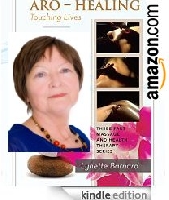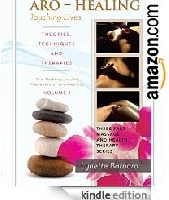{{item.currency}} {{pricing}} - Out of Stock
A guaranteed remedy for nappy nash! Covering damaged skin gently, using Baby Bottoms Barrier Cream, will be very soothing when your baby has nappy rash.
|
BABY BOTTOMS - BARRIER CREAM FOR BABIES |
|
|
|
|
|
|||||||||
|
The online shop price is for 50ml |
|
|||||||||||||
|
10ml |
50ml |
100ml |
Barrier Cream for Babies |
|
|
|
|
|
||||||
|
R13.00 |
R65.00 |
|
ONLINE SHOP |
|||||||||||
Most babies with nappy rash will be more irritable than usual, and may sleep poorly. They often need more attention, holding and comforting. Baby Bottoms Barrier Cream will come to your rescue.
Nappy rash is very common and can happen no matter how careful you are. Some babies still get nappy rash, even with the best care, while others hardly get it. A lot depends on how sensitive the child's skin is.
Nappy rash happens when a baby's skin is covered by a wet or dirty nappy for too long. How long 'too long' is, varies with different babies, and varies for any one baby depending on, for example, whether the baby is well or unwell.
What does nappy rash look like:
- It is red swollen skin that looks damp and may have some blisters or ulcers.
- It is usually in the area that is covered by a nappy.
- Sometimes there can be small patches of red skin on the tummy, legs or buttocks with healthy skin around them. This can be a sign of an infection on top of the nappy rash.
What triggers nappy rash:
- Many babies are prone to nappy rash when they are unwell, particularly if they have diarrhoea. Their skin seems to be more sensitive.
- Starting a new food seems to trigger the rash for some babies.
- Having a wet or dirty nappy on for too long.
- Chemicals in disposable nappies were a problem for some babies, but this seems to be much less of a problem now.
- An infection on the skin, such as thrush, can make the rash worse. Thrush normally lives in the gut and on skin without causing any problem, but when the skin is damaged thrush can make the damage worse.
What causes nappy rash:
A baby's urine is sterile (there are no germs in their urine), but there are germs on the baby's skin, in poo and on clothing (including nappies).
- These germs make ammonia when wet with urine or poo.
- Ammonia can burn the skin.
- The nappy can rub on the skin (especially stiff cloth nappies).
- Plastic pants over the nappy prevent air flow around the nappy, and they also hide a nappy which may be very wet or dirty, so the skin stays wet for a long time.
What to do about nappy rash:
- Change nappies often so that the skin is dry most of the time.
- Having time when there is no nappy on can also help the skin to dry fully.
- Disposable nappies, with linings which absorb the urine and keep the skin dry, seem to help a lot of babies.
- Wash baby's bottom very gently so you don't rub the skin, but make sure that the skin is clean (check in all of the folds). Using a simple cleanser such as sorbolene rather than soap may be better to wash your baby's bottom.
- Use only skin wipes that are made for babies. Skin wipes for adults often have alcohol in them and this can cause pain and discomfort on damaged skin.
- Use a barrier cream, to keep dampness away from the skin, every time you change the nappy - eg zinc and castor oil, or zinc and cod liver oil. Note: these creams stain clothes and nappies. Many people use disposable nappies to avoid stains.
- If you are using cloth nappies, change them often and wash using soap powders which are labelled for sensitive skin. Drying them in a tumble dryer, if you have one, may make them softer than drying in the sun. Avoid using plastic pants whenever possible.
Some parents find the following helpful although we know of no research to support the ideas. For washing the affected area - a solution of bicarbonate of soda - 1 teaspoon to 600 mls of water. Use a cup of vinegar in the rinse water when washing nappies.
Pain Relief:
Nappy rash is painful.
- Most babies with nappy rash will be more irritable than usual, and may sleep poorly. They often need more attention, holding and comforting.
- Pain relief using paracetamol can help. Make sure the dose is the right one for your baby (check the label on the bottle).
- Covering damaged skin using a barrier cream gently and often can be soothing. You could talk with your local pharmacist (chemist) to help choose one.
Powders:
Powders are not necessary. There is concern that talc powder and other powders may be breathed in by a baby, and this may cause some health problems. The yeast that causes thrush feeds on cornstarch powder (corn flour), so this powder should not be used either.
What to do if nappy rash does not go away:
- Sometimes the rash does not clear up because there is an infection on the damaged skin. Thrush can make nappy rash worse as can some bacterial infections.
- A baby may have an underlying skin problem such as eczema. In this case the baby may have rashes on other parts of the body (such as the face). The rash may be inside the skin folds, while nappy rash mostly does not affect skin that is not in contact with the nappy.
- See your doctor or health care worker.
- Creams that treat thrush or eczema may be useful. They can be spread on the clean dry skin, left for a few minutes, then covered by the barrier cream.
- If it seems likely that thrush is part of the problem, oral drops which lower the amount of thrush in the gut may be useful too.
It is said that in places in the world where young children run around without nappies there is no nappy rash.
References:
Garfunkel L, et al (Ed) Mosby's Pediatric Clinical Advisor' Mosby Inc 2002
Humphrey S, Bergman JN, Au S, 'Practical management strategies for Diaper Dermatitis' Medscape 13/10/2006
http://www.medscape.com/viewarticle/545552_printMarks R, et al 'Atlas of common skin diseases in Australia' Department of Dermatology, St Vincent's Hospital, Sydney 1999
-
http://www.cyh.com/HealthTopics/HealthTopicDetails.aspx?p=114&np=304&id=1677
| Back | Back to top |




